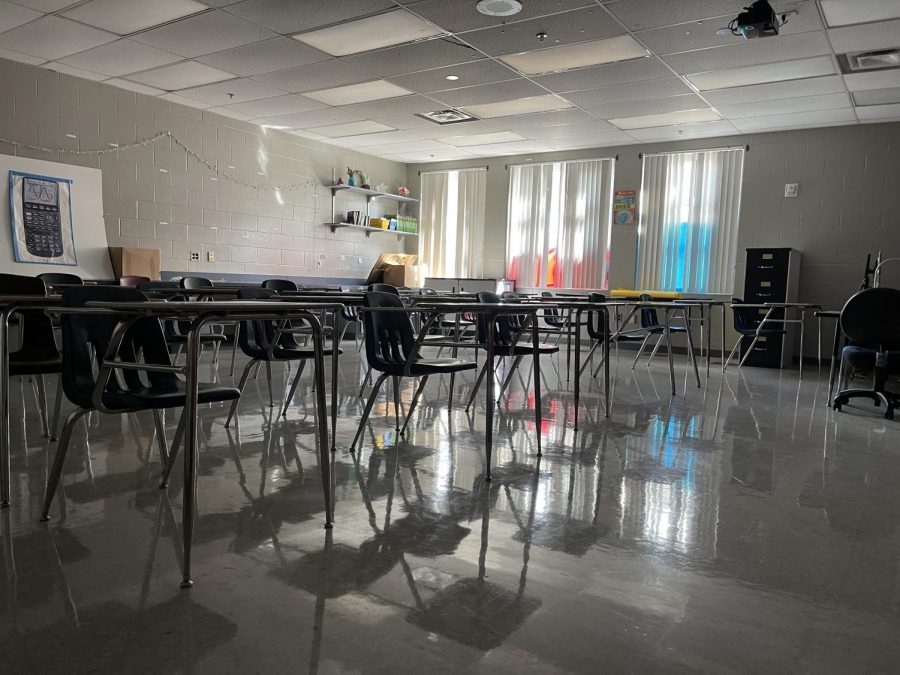EDITORIAL: Understaffed, overworked
Photo provided by: Makayla Martindale
The ongoing staff shortages within the local community have negatively impacted the school district, businesses and students. This classroom, now unused, was once full of students, but has been unfilled for weeks after a major schedule change occurred due to the insufficient resources for students and teachers.
October 17, 2021
At risk of sounding like a broken record, COVID-19 has made its fair share of negative contributions (record = broken). Among these contributions, there is a shortage of staff at virtually every workplace. As students, we see these implications affecting multiple areas of our lives, specifically within the school setting and around our community.
With an influx of students returning to campus this school year, there was a noticeably uneven ratio between teachers, students and faculty. So much so, a large portion of our student body received schedule changes throughout the first month of school to accommodate for the lack of teachers. Many found themselves in more crowded classes, leaving less room for individualized help. According to edweek.org, a numerous amount of faculty and staff decided not to return to campuses around the nation due to concerns regarding health and safety from the pandemic. This led to an increased need for substitutes, which were also in short supply but high demand. As a result of the significant lack of staff, our school has had to resort to grouping multiple classes in wider spaces such as the auditorium, media center and gym. However, this creates a dilemma for students needing adequate workspace and technology. Without supplies and proper instructors, some are at high risk of falling behind.
Not only are we on the receiving end of the short staffing issue, but many students are also employees of understaffed corporations. The stress of balancing work and school was exponentially increased by working longer hours while being short handed. At our local Chick-Fil-A, where a significant number of our classmates work, many have found that they are constantly compensating for unfilled roles, while also managing their own. Staff member, Avery Ranum, has experienced this firsthand, as she became employed in the midst of the pandemic. Working the drive-thru can be a strenuous task, made increasingly worse by the lack of people available to help when assistance is required.
As we observe the impacts of staff shortages personally, we also recognize the economic situation that business owners and employers are facing. According to the Society for Human Resource Management (shrm.org), roughly 1,080 out of 1,200 employers are facing hardships in filling vital positions within the company. Additionally, the lack of income from months of quarantine has made it difficult for businesses to afford new staff. Many companies have lowered their starting pay to compensate, and drawn in a younger demographic of applicants. However, there are not enough new employees to cover the workload. This slows business and productivity, while also creating a more stressful work environment for our peers.
We propose that businesses employ various types of recruitment strategies in order to entice more people to fill the needed positions. These can include adding better referral programs for employees and enacting new technology. After the recruitment process, positions should be offered with more benefits to compensate for the lower wages. We believe that these solutions will provide employers fulfill staffing needs, reduce the amount of pressure placed upon student workers in our community and benefit our school system by creating a more personalized learning experience.








